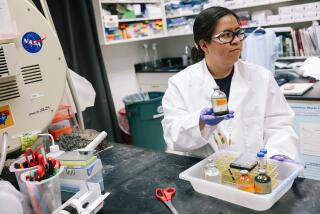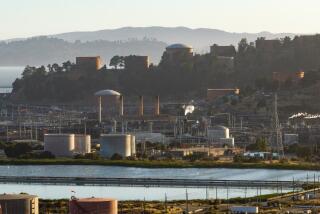Small Business in Space
California did best in this autumn’s annual competition for six-month feasibility study grants from NASA’s Small Business Innovation Research program. Proposing to study such esoteric subjects as “microanalytical characterization of biogenic components in interplanetary dust,” 54 California companies won 64 of the 206 contracts awarded. Massachusetts came in second with 32 contracts.
As required by a 1982 law, the National Aeronautics and Space Administration allocates 1.25% of its annual research and development budget to SBIR. NASA will disburse about $50,000 apiece for the winning studies, which were chosen from among 1,744 proposals. About half of the studies later will receive two-year grants of up to $500,000 to continue development and, in some cases, start building a prototype of the innovation. Small businesses are defined as those with fewer than 500 employees, SBIR program manager John Glaab said.
PDA Engineering made one of the most unusual but successful proposals by a Southern California firm. The Costa Mesa company, which employs about 160, will study the construction of lightweight gondolas for high-altitude balloons. By using graphite and synthetic fibers to make the instrument-carrying containers both stronger and more than 10% lighter, the program will enable scientists to use farther flying, 20% smaller balloons to study atmospheric conditions at altitudes exceeding 100,000 feet, said Hap Stoller, general manager of the firm’s materials and structures technologies division.
NASA has solicited proposals for a space station robot, but the result is unlikely to look anything like C3PO and other ambulatory, near-human machines featured in Hollywood’s science fiction movies.
Seven companies have bid on a two-year contract to design and build a prototype robot for use inside one or more of the station’s pressurized modules. Initial guidelines from NASA give no indication of the device’s eventual size and weight because the contract includes defining what uses a robot may have aboard a space station.
NASA’s work statement asking for project proposals stated that some of the robot’s capabilities might include the handling of hazardous materials and the storage and retrieval of tools and supplies. The robot’s design also should “allow future incorporation of artificial intelligence and expert system technology.” NASA did not specify a range of contract bids, but estimated that the entire project, including the production of computer simulations and a working model by sometime in 1990, would take about 14,600 hours of labor.
Whatever design wins, it almost certainly will not be able to fly around inside the space station on its own, said Tom Perdue, operations manager at the Huntsville headquarters of 340-employee Sparta Corp., which has bid on the contract and maintains its business offices in Laguna Hills. “I don’t think you want that thing moving around without some kind of control. . . . It has to cohabitate with humans.”
More to Read
Inside the business of entertainment
The Wide Shot brings you news, analysis and insights on everything from streaming wars to production — and what it all means for the future.
You may occasionally receive promotional content from the Los Angeles Times.










